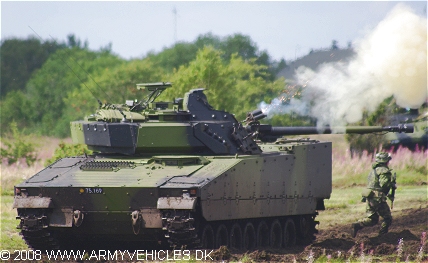Good thing to do, I'd say (
via GAP):
Editor embedded with the Canadian ForcesMelissa Vasey - Editor-in-Chief


Melissa Vasey
An explosion blasts in the distance. Several more blasts detonate, and then four insurgent men sprint back to our base camp.
Lt. Ian Nash stands beside me and practically buzzes with excitement as he informs me that the tanks perched on the hill can see my face clear as day, and they’ve got a problem: I’m a civilian.
On that day, I was one of nine other student journalists embedded with the Canadian Armed Forces, participating in a military training exercise at CFB Suffield. The exercise is just one step in the lengthy preparation process for the Princess Patricia’s Canadian Light Infantry, who are scheduled for deployment to Afghanistan in September.
My peers and I are here on scholarship but instead of the stereotypical pomp and circumstance, we’ve been thrown into intense academic training and non-stop networking.
The night before, we sat with Reserve soldiers in their officer’s mess, discussing the personal realities of war in Afghanistan. (Too-soon wedding proposals to girlfriends back home are one common phenomenon.) As the night went on and the beer bottles emptied, one thing became apparent: every soldier there was aching to go back.
But here on the field, the soldiers aren’t as relaxed. The men and women have been out here for 30 days and just discovered that the Lord Strathcona’s Horse (Royal Canadians), responsible for this exercise, aren’t letting the soliders off easy on their final day.
The Patricias know there are insurgents in our plywood village, but the Rules of Engagement prevent them from being able to respond with force. Simply put, every person is a civilian until proven otherwise.
The Patricias don’t know that there are two insurgent individuals hiding in the village, one of which happens to be crouching beside me. The soldiers will have to demobilize the threat without harming anyone else.
Off in the distance, an accidental fire causes billows of smoke that envelope the tanks, fading them in and out of sight. Lt. Nash looks more alive than ever as the troops lose their visual ability to assess the situation from afar. Now they have no choice but to move in.
Light armoured vehicles (LAVs) speed up to our encampment, dropping off soldiers just outside the perimeter.
Small explosives are thrown towards the vehicles, each howling a warning whistle and then detonating clouds of smoke. The first lands two metres from my location and the loud ringing in my ears makes me temporarily wonder if I’ve gone deaf.
As the soldiers begin to infiltrate the city, the insurgent beside me starts to fire. The bullets are blanks, but the gunshots are overwhelming. I suddenly feel trapped and try to maintain composure by fighting my flight instinct. A few very long seconds later, three troops burst through the door and shoot the insurgent.
I stay in the plywood building, with the now “corpse” insurgent, and watch from the window. Orders are shouted from superior officers, the language uncensored. Pairs and trios of soldiers pass by, each stopping and going as necessary, in what appears to be organized chaos.
Many of the soldiers make eye contact with me, watching as I shoot photo after photo on my camera, sometimes right in their face. They glare, they grimace and they scowl, but not one soldier says a word to me.
A woman dressed in all black approaches three soldiers on the opposite side of the street. Distracted by the action up ahead, they pay her little notice until she lifts up her shirt and detonates a plume of baby powder — she was a suicide bomber, and they’re now all dead.
One of the three soldiers leans against the nearby building in shock, neither sitting nor standing, as he tries to mentally process what had just happened. He had just learned first hand how quickly a simple mistake can kill. A few moments later, the firing stopped and the organized chaos became a little less chaotic.
With the village now void of violence, the soldiers begin to check and clear the buildings. Finally well organized, the soldiers herd the mass of protesting civilians and journalists outside of the village.
The adrenaline is still pumping through our bodies as we finally break character, and leave the real soldiers be. The 10 student journalists head back to camp for some food, and then hunker down in a large tent with two rows of cots to finally rest. After 36 hours without sleep, it’s well deserved.
I'm not certain but I think it was
part of this:
Exercises Desert Ram and Western Defender To Culminate with Exercise Total Ram
Student journalists also took part in this in January:
Exercise Noble Guerrier














![[Commentary]](http://s.wsj.net/public/resources/images/OB-DT003_oj_aja_E_20090525185232.jpg)










